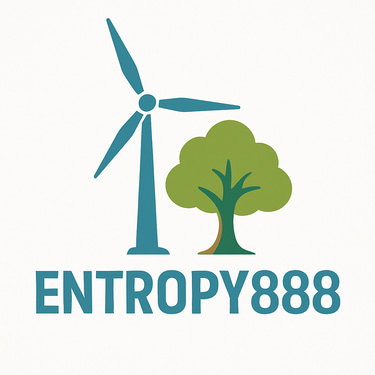Circular Energy Systems: How Bitcoin Mining Fits Into a Regenerative Economy
For over a century, the global energy economy has been linear: extract → consume → waste. But as the world shifts toward renewable power, a new model is emerging — circular energy systems, where every unit of energy is reused, recycled, and reinvested into nature. And at the center of this transformation stands an unlikely catalyst: Bitcoin mining.
RENEWABLE ENERGY & BITCOIN MINING
Chris Boubalos
10/31/2025
1. The Linear Past
The old industrial model treated energy as disposable.
Power plants burned fuel, produced electricity, and released heat and emissions into the air.
Once consumed, energy was gone — leaving pollution and inefficiency behind.
Even renewables, for all their benefits, inherited a linear logic:
generate → sell → curtail excess.
When demand dropped or grids overloaded, clean energy went to waste.
2. The Circular Future
Circular energy systems flip that equation.
In a regenerative economy:
Every watt has multiple uses.
Waste becomes input for something else.
Value loops, instead of ending.
Bitcoin mining makes this possible — not by consuming more energy, but by ensuring that no energy goes unused.
3. Bitcoin Mining as the Balancing Layer
Mining is the missing link between renewable generation and economic efficiency.
It acts as a flexible demand sink, ready to absorb surplus power anytime, anywhere.
When the grid doesn’t need electricity, miners convert it into Bitcoin — a digital store of value that transcends borders.
When the grid does need it, mining pauses instantly, freeing power for essential demand.
This real-time adaptability keeps the energy cycle continuous and balanced.
4. The Energy Loop in Action
A circular mining-based system looks like this:
Renewable power (hydro, solar, wind) produces clean energy.
Bitcoin miners consume surplus and stabilize the grid.
Immersion cooling captures waste heat.
Recovered heat powers greenhouses, farms, and buildings.
Profits fund reforestation, new renewable projects, and local infrastructure.
Each step feeds the next — forming a loop where energy creates both digital value and ecological regeneration.
5. Real-World Impact
In Northern Europe, heat from mining warms communities.
In South America, hydro-powered miners fund tree planting.
In Africa, solar-powered farms mine Bitcoin by day and irrigate crops by night.
Across continents, Bitcoin is quietly becoming the connective tissue of clean energy economics.
6. Why This Model Works
Circular systems work because they align physics with finance:
Thermodynamics: No energy is lost — it transforms.
Economics: Every transformation generates value.
Ecology: Value reinvests into nature, closing the loop.
Bitcoin mining, often accused of “wasting energy,” is in fact the ultimate expression of energy efficiency — because it monetizes the otherwise unmonetizable.
7. The Entropy888 Blueprint
Entropy888 designs regenerative mining systems where:
Clean energy is harvested.
Surplus is mined.
Heat is reused.
Profits are reforested.
Each operation is not an endpoint — it’s a node in a living, breathing energy cycle.
Our mission is to turn entropy — the natural drift toward disorder — into regeneration, balance, and abundance.
8. A New Definition of Wealth
In a regenerative economy, wealth is no longer just money.
It’s:
Stable grids.
Thriving ecosystems.
Empowered communities.
Clean, perpetual energy.
Bitcoin mining becomes the bridge — turning electrons into value, and value back into life.
Conclusion
The 20th century was about extracting energy.
The 21st will be about circulating it.
Entropy888 stands at the center of that shift — proving that technology can be circular, that progress can be regenerative, and that even entropy can serve life.
Contact
© 2025 Entropy888. All rights reserved.
Powered by Renewable Energy.
Christos Boubalos - Business Development Lead +306972 885885 mob/whatsapp
christos@entropy888.com
-------------------------------------------
General Enquiries - info@entropy888.com
